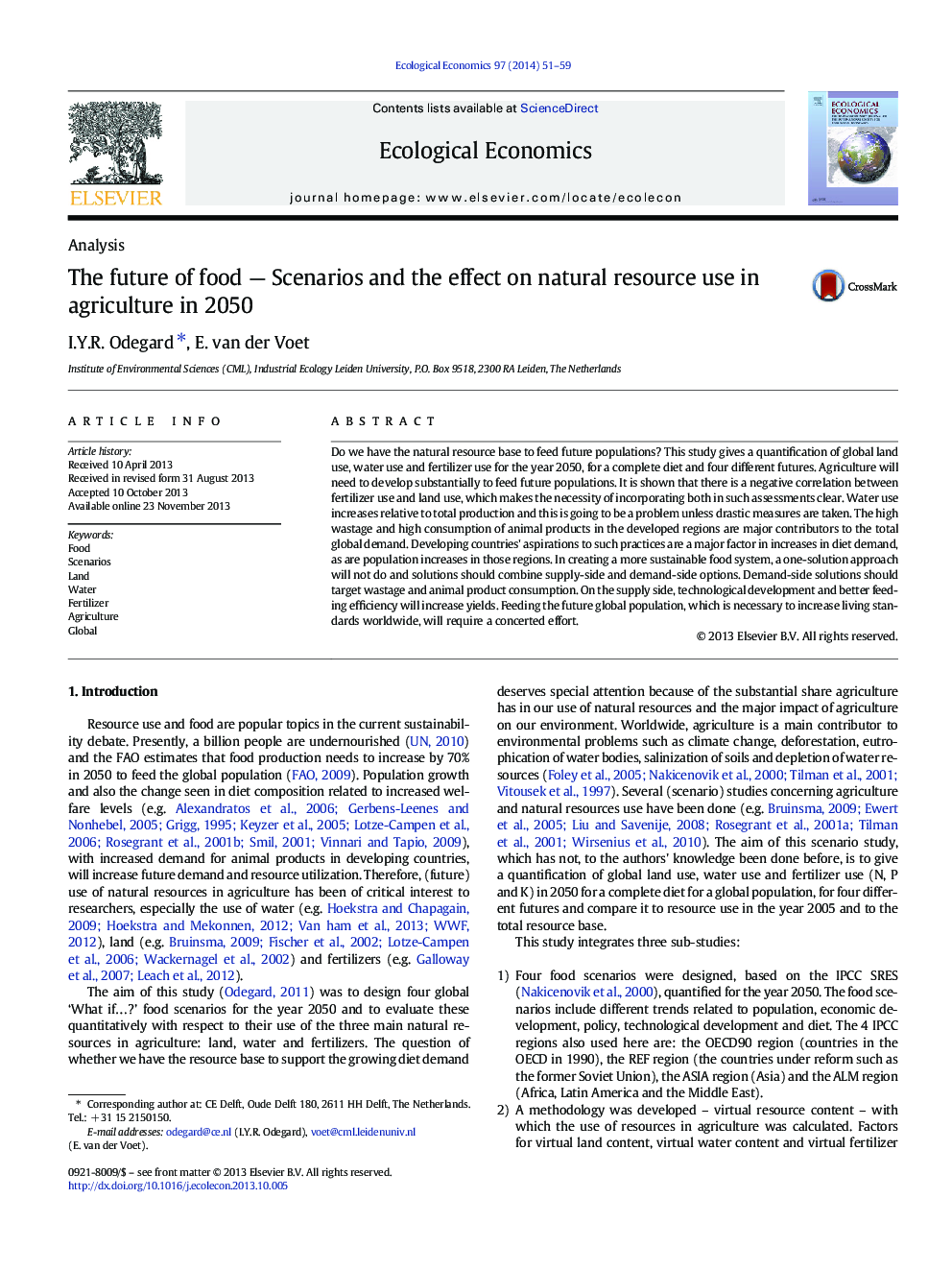| کد مقاله | کد نشریه | سال انتشار | مقاله انگلیسی | نسخه تمام متن |
|---|---|---|---|---|
| 5049808 | 1476382 | 2014 | 9 صفحه PDF | دانلود رایگان |
- We do not have the resource base to supply current Western diets globally in 2050.
- Food scenario studies should incorporate land use, water use and fertilizer use.
- We should lower meat consumption and waste, and eat less intensive protein products.
Do we have the natural resource base to feed future populations? This study gives a quantification of global land use, water use and fertilizer use for the year 2050, for a complete diet and four different futures. Agriculture will need to develop substantially to feed future populations. It is shown that there is a negative correlation between fertilizer use and land use, which makes the necessity of incorporating both in such assessments clear. Water use increases relative to total production and this is going to be a problem unless drastic measures are taken. The high wastage and high consumption of animal products in the developed regions are major contributors to the total global demand. Developing countries' aspirations to such practices are a major factor in increases in diet demand, as are population increases in those regions. In creating a more sustainable food system, a one-solution approach will not do and solutions should combine supply-side and demand-side options. Demand-side solutions should target wastage and animal product consumption. On the supply side, technological development and better feeding efficiency will increase yields. Feeding the future global population, which is necessary to increase living standards worldwide, will require a concerted effort.
Journal: Ecological Economics - Volume 97, January 2014, Pages 51-59
